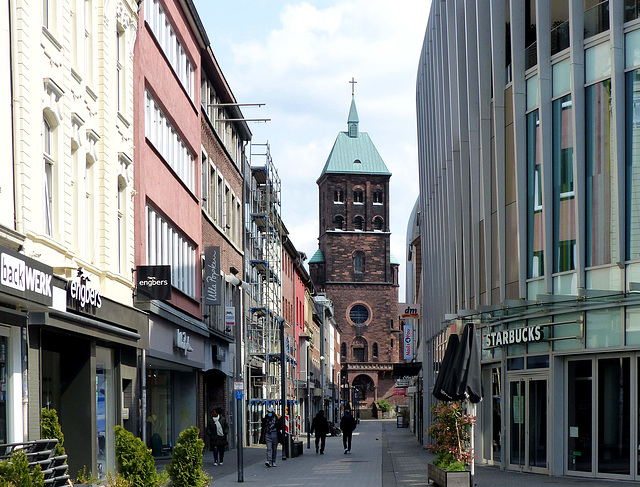Aachen - Elisenbrunnen
Aachen - Theater
Bad Meinberg - Kurpark
Bad Meinberg - Rose Klinik
Bad Meinberg - Alter Krug
Bad Meinberg
Bad Meinberg - Evangelisch-reformierte Kirche
Bad Meinberg - Evangelisch-reformierte Kirche
Bad Meinberg - Kurhotel zum Stern
Rethem - Gumball Machine
Walsrode - Stadtkirche
Walsrode - Stadtkirche
Walsrode - Stadtkirche
Walsrode - Stadtkirche
Walsrode - Kloster Walsrode
Walsrode - Kloster Walsrode
Walsrode - Kloster Walsrode
Walsrode - Kloster Walsrode
Walsrode - Kloster Walsrode
Lübeck - Holstentor
Lübeck - Holstentor
Lübeck - St. Marien
Lübeck - St. Marien
Aachen - St. Folian
Aachen - Hof
Aachen - Hof
Aachen - Cathedral
Aachen - St. Michael
Soest - Patrokli Cathedral
Soest - Patrokli Cathedral
Soest - Patrokli Cathedral
Soest - Patrokli Cathedral
Soest - Patrokli Cathedral
Soest - Patrokli Cathedral
Soest - Patrokli Cathedral
Horn - Evangelical Reformed Church
Horn - Evangelical Reformed Church
Horn - Evangelical Reformed Church
Horn - Evangelical Reformed Church
Horn - Rathaus
Horn - Nordstrasse
Horn - Amtsgericht
Horn - Kotzenbergscher Hof
Horn - Mittelstrasse
Horn - Salon Schöne
Location
See also...
Keywords
Authorizations, license
-
Visible by: Everyone -
All rights reserved
-
91 visits
Aachen - St. Adalbert


Aachen, the westernmost city in Germany, developed from a Roman settlement and spa, subsequently becoming the preferred medieval Imperial residence of Emperor Charlemagne of the Frankish Empire. From 936 to 1531 Aachen was the place where 31 Holy Roman Emperors were crowned Kings of the Germans.
Pepin the Short had a castle residence built in the town, due to the proximity of the hot springs and also for strategic reasons between the Rhineland and northern France. Charlemagne´s coronation as king of the Franks took place here in 768. He spent most winters in Aachen between 792 and his death in 814. Aachen became the focus of his court and the political centre of his empire.
The former collegiate church of St. Adalbert was consecrated in 1005. It is thus the second oldest church in the city after Aachen Cathedral.
Emperor Otto III had been a friend of Adalbert of Prague. Subsequent to the canonization of Bishop Adalbert Otto III distributed Adalbert`s relics to churches in his empire
and ordered the construction of a monastery church for the Imperial City of Aachen, which he wanted to consecrate to St. Adalbert as well as to St. Hermes.
The church was located one kilometre east of the Aachen Palatinate along the old Roman road to Trier.
Otto´s successor Henry II had the church completed and in 1005 it was consecrated to St. Hermes and St. Adalbert. The emperor appointed clergymen to form the collegiate convent and declared the church a legally free imperial foundation.
After the construction of the outer city wall at the end of the 13th-century, the three-nave Romanesque pillar basilica belonged to the imperial city territory.
During the French occupation, the monastery was dissolved although the church remained as a parish church. For this purpose, the church was extensively restructured for the first time in 1809. After the population had increased significantly, another rebuilding and partially new construction with the extension to a five-nave church took place in 1875/76.
During the air raids in 1943, the church was set on fire and burned out almost completely. However, it was rebuilt and reopened in October 1949.
-
Seen to the right is the facade of "Aquis Plaza", a new mall.
Pepin the Short had a castle residence built in the town, due to the proximity of the hot springs and also for strategic reasons between the Rhineland and northern France. Charlemagne´s coronation as king of the Franks took place here in 768. He spent most winters in Aachen between 792 and his death in 814. Aachen became the focus of his court and the political centre of his empire.
The former collegiate church of St. Adalbert was consecrated in 1005. It is thus the second oldest church in the city after Aachen Cathedral.
Emperor Otto III had been a friend of Adalbert of Prague. Subsequent to the canonization of Bishop Adalbert Otto III distributed Adalbert`s relics to churches in his empire
and ordered the construction of a monastery church for the Imperial City of Aachen, which he wanted to consecrate to St. Adalbert as well as to St. Hermes.
The church was located one kilometre east of the Aachen Palatinate along the old Roman road to Trier.
Otto´s successor Henry II had the church completed and in 1005 it was consecrated to St. Hermes and St. Adalbert. The emperor appointed clergymen to form the collegiate convent and declared the church a legally free imperial foundation.
After the construction of the outer city wall at the end of the 13th-century, the three-nave Romanesque pillar basilica belonged to the imperial city territory.
During the French occupation, the monastery was dissolved although the church remained as a parish church. For this purpose, the church was extensively restructured for the first time in 1809. After the population had increased significantly, another rebuilding and partially new construction with the extension to a five-nave church took place in 1875/76.
During the air raids in 1943, the church was set on fire and burned out almost completely. However, it was rebuilt and reopened in October 1949.
-
Seen to the right is the facade of "Aquis Plaza", a new mall.
Marco F. Delminho has particularly liked this photo
- Keyboard shortcuts:
Jump to top
RSS feed- Latest comments - Subscribe to the comment feeds of this photo
- ipernity © 2007-2024
- Help & Contact
|
Club news
|
About ipernity
|
History |
ipernity Club & Prices |
Guide of good conduct
Donate | Group guidelines | Privacy policy | Terms of use | Statutes | In memoria -
Facebook
Twitter

www.ipernity.com/group/churches
Sign-in to write a comment.